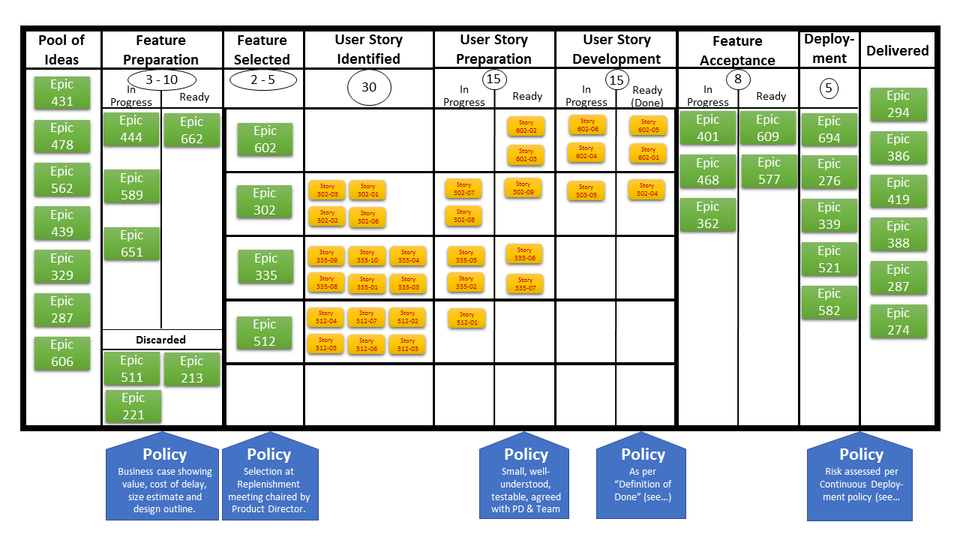Kanban board
Introduction
According to Wikipedia (Jan 2019), “Kanban boards visually depict work at various stages of a process using cards to represent work items and columns to represent each stage of the process. Cards are moved from left to right to show progress and to help coordinate teams performing the work. A Kanban board may be divided into horizontal "swimlanes" representing different kinds of work or different teams performing the work. Kanban boards can be used in knowledge work or for manufacturing processes. Simple boards have columns for "waiting", "in progress" and "completed" (or "to-do", "doing", and "done"). Complex Kanban boards can be created that subdivide "in progress" work into multiple columns to visualise the flow of work across a whole value stream map.”
“Kanban is a method for defining, managing, and improving services thatdeliver knowledge work, such as professional services, creative endeavors, and the design of both physical and software products. It may be characterized as a “start from what you do now” method—a catalyst for rapid and focused change within organizations—that reduces resistance to beneficial change in line with the organization’s goals. The Kanban Method is based on making visible what is otherwise intangible knowledge work, to ensure that the service works on the right amount of work—work that is requested and needed by the customer and that the service has the capability to deliver. To do this, we use a kanban system—a delivery flow system that limits the amount of work in progress (WiP) by using visual signals.” (Essential Kanban Condensed, p. 1)
“Items on a list are each treated as "cards." Offline versions often use Post-It Notes moved across a series of bins. It's based on a process developed for manufacturing, but widely adopted by the lean software development community. Cards might represent a feature, which is moved across a board to represent its flow through development, review, testing, and deployment. Digital tools often allow attachments to these cards: images, links, additional lists, a person assigned to the task, etc., and many have additional tools for giving you a fuller picture of how tasks are moving across a workflow.” ([https://opensource.com/alternatives/trello 5 open source alternatives to Trello] (retr. Jan 16 2019).
Every kanban system is unique. Examples:

Software
To implement a digital kanban board, on could either use standard software, e.g. a flexible "todo", productivity tool or some note taking software.
There is also more or less specialised software, some of which also can be used for the similar Bullet journal approach.
- kanban.org is free server/client solution that requires some system adminstration/installation skills.
Bibliography and links
Anderson, David J.; Carmichael, Andy (2016). Essential Kanban Condensed. Seattle, WA: Lean Kanban University Press. ISBN 978-0-9845214-2-5. https://leankanban.com/guide/. A free condensed guide is available, registration required.
Kanban Guide: Demand Scheduling for Lean Manufacturing, Compiled by Nilesh R Arora. Add ValueConsulting Inc., India 2001, S. 11.
J. M. Gross, Kenneth, R. McInnis: Kanban Made Simple—Demystifying and Applying Toyota's Legendary ManufacturingProcess. Amacom, USA 2003, S. 50. ISBN 0-8144-0763-3
Kanban: Organization for the Whole Family, Posted on November 15, 2018 by Angela Leach--------
Content of this article has been taken from EduTechWiki (en) or EduTechWiki (fr) at the date indicated in the history. DKS was the main founder and main contributor of EduTechWiki. If you cite this page you also must cite and credit EduTechWiki, according to the CC BY-NC-SA license. View the pageinfo-toolboxlink for this article.



